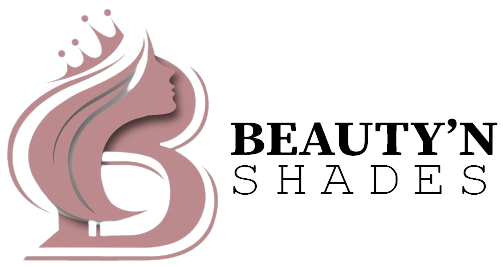Introduction
Hair loss is a concern that affects millions of people worldwide. Whether it’s due to genetics, age, hormonal imbalances, or various medical conditions, the search for effective hair loss treatments is a quest that never ceases. In this comprehensive guide, we’ll explore the best hair loss treatments available today, delving into both traditional and innovative approaches to help you make an informed decision about which method might work best for you.
Understanding the Basics of Hair Loss
1. What Causes Hair Loss?
Before we delve into the best hair loss treatments, it’s crucial to understand the root causes of this common issue. Hair loss can be attributed to several factors:
Genetics (Androgenetic Alopecia): This is the most common cause of hair loss, with hereditary factors playing a significant role in both men and women.
Hormonal Changes: Hormonal imbalances, such as those experienced during pregnancy, menopause, or thyroid disorders, can lead to hair loss.
Medical Conditions: Certain medical conditions like alopecia areata and scalp infections can contribute to hair loss.
Stress and Diet: Chronic stress and poor nutrition can also be culprits in hair loss.
2. The Types of Hair Loss
Hair loss isn’t a one-size-fits-all condition. Understanding the different types can help in choosing the right treatment:
Male Pattern Baldness: Characterized by receding hairlines and thinning at the crown, this affects a significant portion of men.
Female Pattern Baldness: More diffuse thinning in women, often starting at the crown or part line.
Alopecia Areata: This leads to patchy hair loss and is an autoimmune disorder.
3. Hair Growth Cycle
Hair goes through a cycle of growth, rest, and shedding. To address hair loss effectively, we need to understand this cycle and how it’s disrupted in different types of hair loss.
Traditional Hair Loss Treatments
1. Minoxidil
Minoxidil, commonly known as Rogaine, is an over-the-counter topical treatment for hair loss. It is FDA-approved and has been used for decades.
How it works: Minoxidil promotes hair growth by extending the hair growth cycle and increasing the size of hair follicles.
Efficacy: Results can vary, but many users experience some degree of regrowth or hair retention. It’s more effective for those with recent hair loss.
2. Finasteride
Finasteride, known as Propecia, is a prescription medication primarily for men.
How it works: It inhibits the hormone DHT, which is responsible for shrinking hair follicles.
Efficacy: Studies show that finasteride can significantly slow hair loss and promote regrowth in men with androgenetic alopecia.
3. Hair Transplants
Hair transplant surgery involves removing hair follicles from one part of the body and transplanting them to areas with thinning or no hair.
How it works: The transplanted hair is resistant to the factors causing hair loss, ensuring permanent regrowth.
Efficacy: Hair transplant is a highly effective and long-lasting solution for hair loss.
Innovative Hair Loss Treatments
1. Platelet-Rich Plasma (PRP) Therapy
PRP therapy involves injecting a patient’s own platelet-rich plasma into the scalp to stimulate hair follicles.
How it works: PRP contains growth factors that promote hair growth and repair damaged hair follicles.
Efficacy: While more research is needed, some studies suggest PRP therapy can be effective in promoting hair regrowth.
2. Low-Level Laser Therapy (LLLT)
LLLT uses low-level lasers or light-emitting diodes (LEDs) to stimulate hair follicles and promote hair growth.
How it works: LLLT increases blood flow to the hair follicles, providing more oxygen and nutrients.
Efficacy: Results vary, and LLLT is often used in combination with other treatments.
3. Hair Growth Shampoos and Supplements
Numerous shampoos and supplements claim to promote hair growth through various active ingredients like biotin, caffeine, and saw palmetto.
How they work: These products aim to provide the necessary nutrients and improve scalp health.
Efficacy: Results can vary widely, and individual responses may differ.
Lifestyle and Home Remedies
1. Nutrition and Diet
A balanced diet rich in vitamins, minerals, and proteins can support healthy hair growth. Foods like eggs, salmon, and spinach are hair-friendly options.
2. Stress Management
Chronic stress can contribute to hair loss. Techniques such as meditation, yoga, and relaxation exercises can help manage stress levels.
3. Proper Hair Care
Avoid excessive heat styling and harsh chemicals, which can damage hair and exacerbate hair loss.
Conclusion:
Choosing the Best Hair Loss Treatment for You
Finding the best hair loss treatment depends on various factors, including the type and cause of your hair loss, your age, and your overall health. It’s essential to consult with a healthcare professional or dermatologist before starting any treatment regimen. They can help determine the most suitable approach for your specific situation.
Remember that results may take time, and consistency in treatment is often crucial. It’s also important to set realistic expectations. While some treatments can significantly improve hair loss, a full head of hair may not always be attainable.
In conclusion, the quest for the best hair loss treatment continues to evolve, offering traditional, innovative, and lifestyle-based options. Through understanding the causes of hair loss and the various treatments available, individuals can make informed choices to address this common concern and regain confidence in their appearance.



